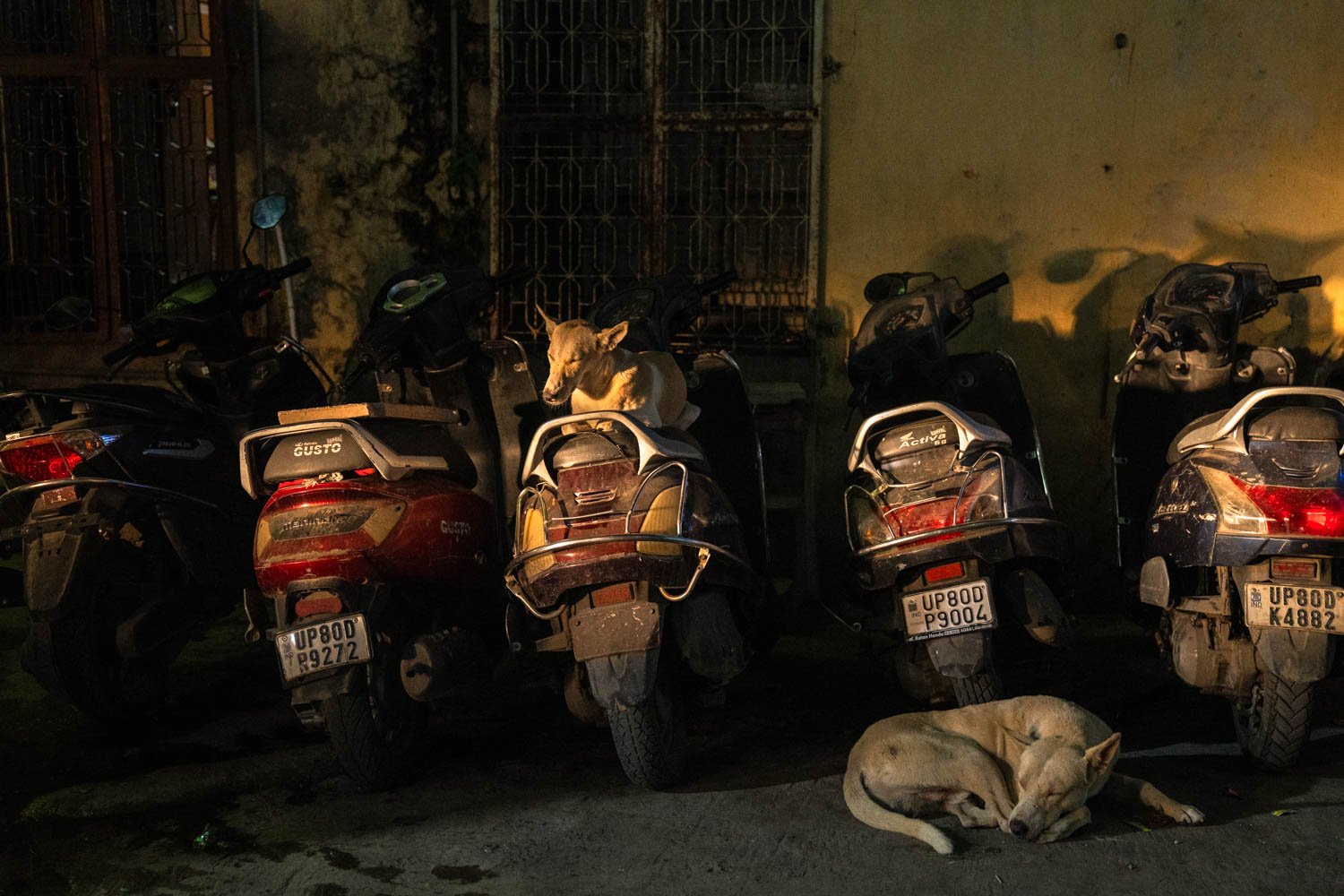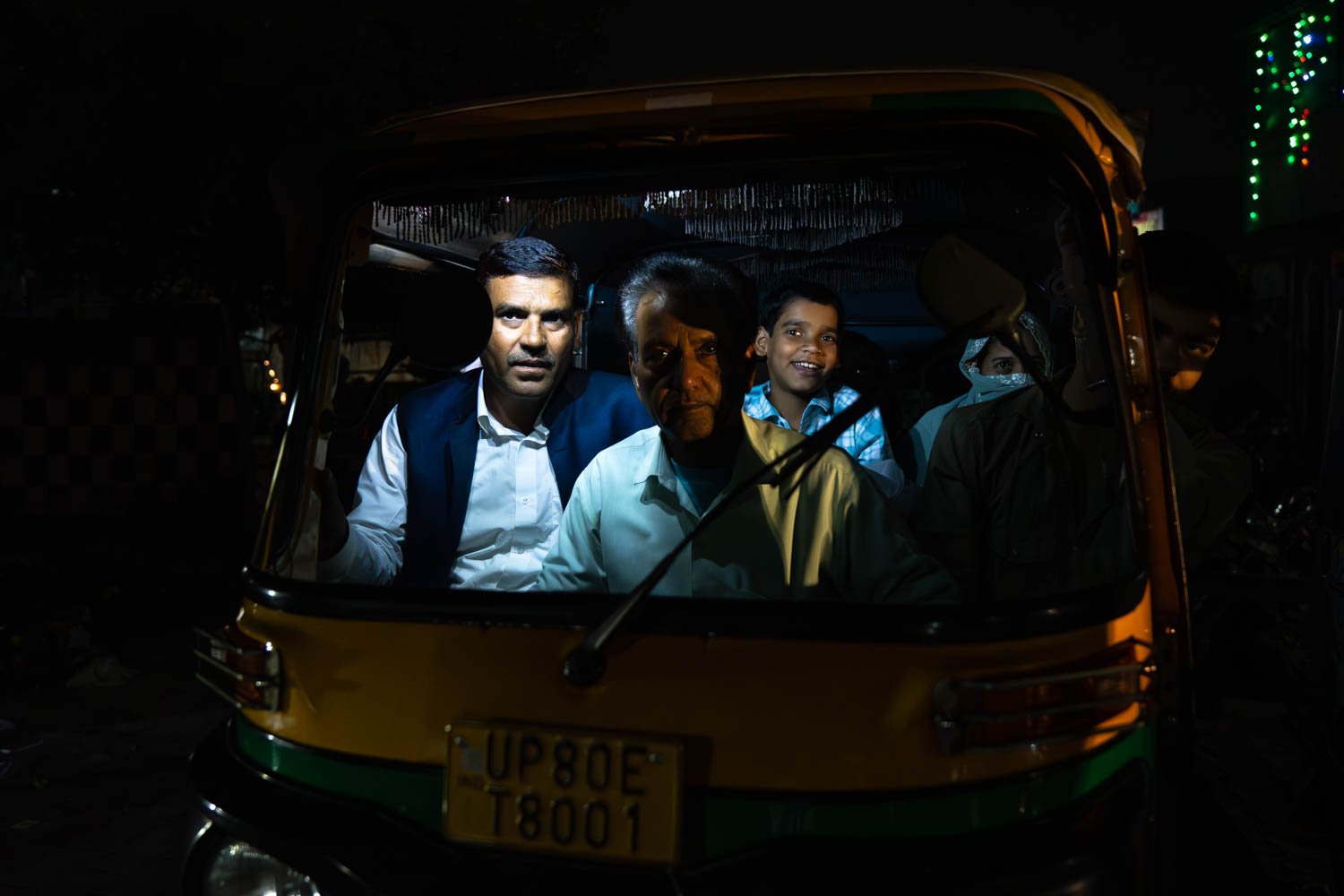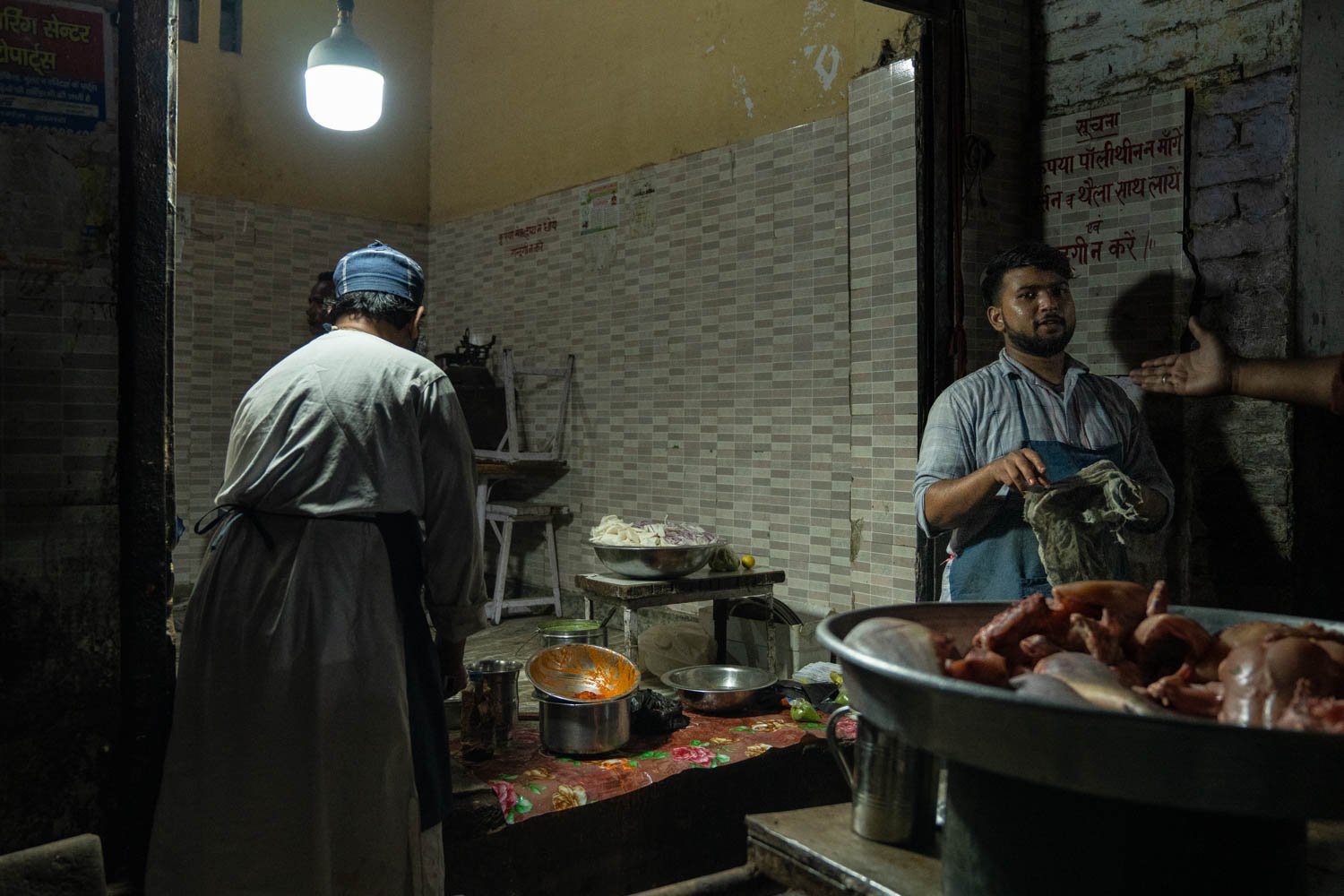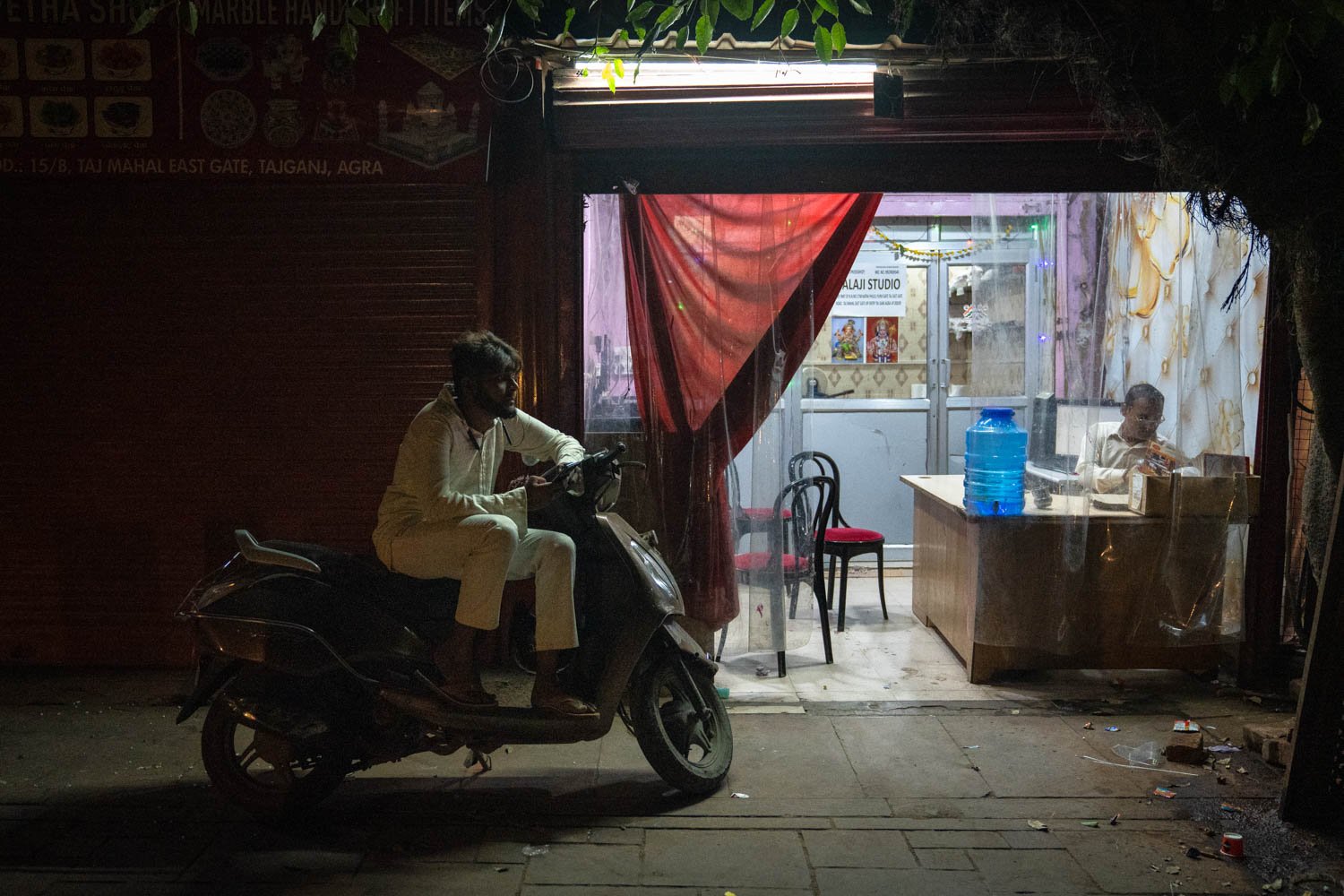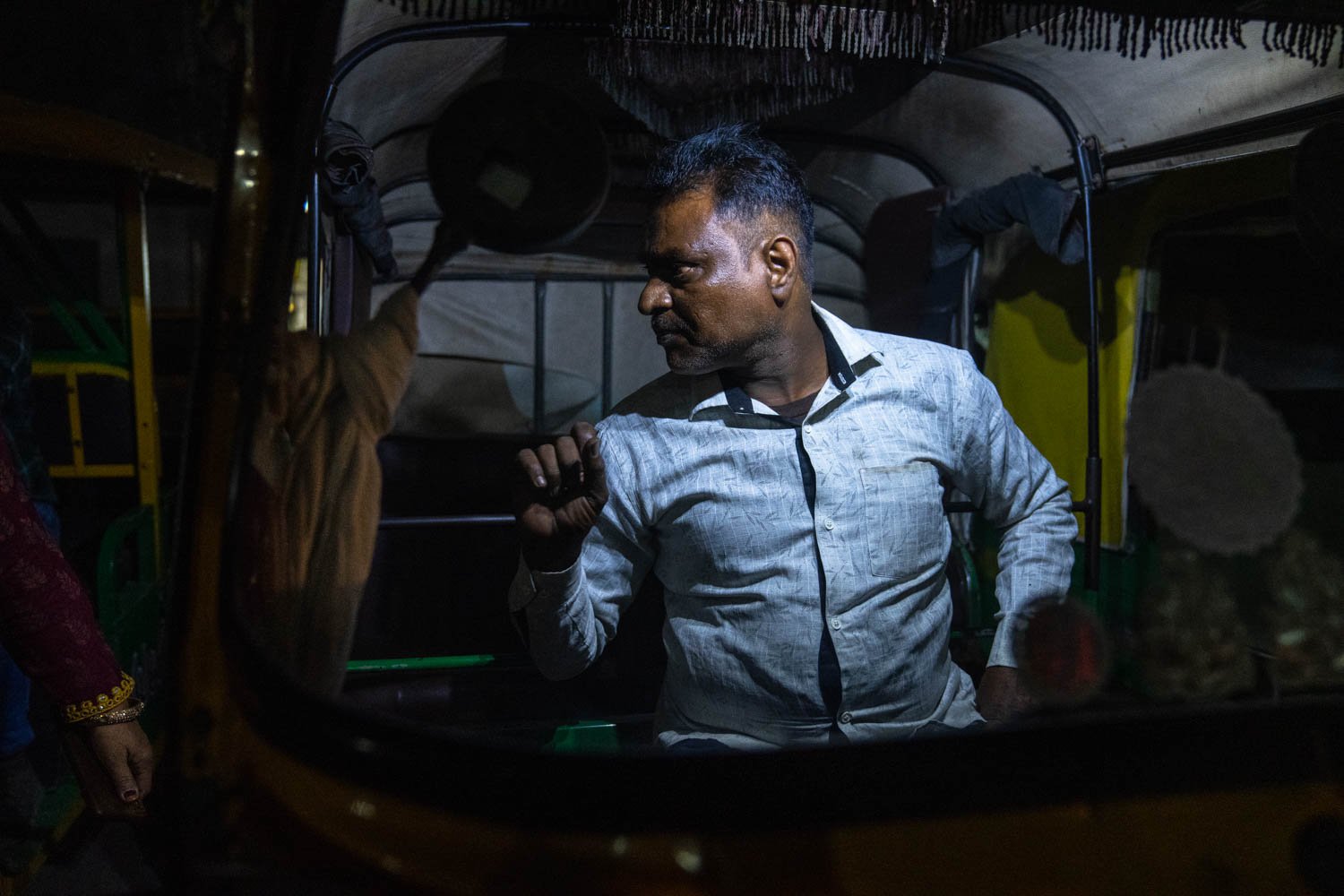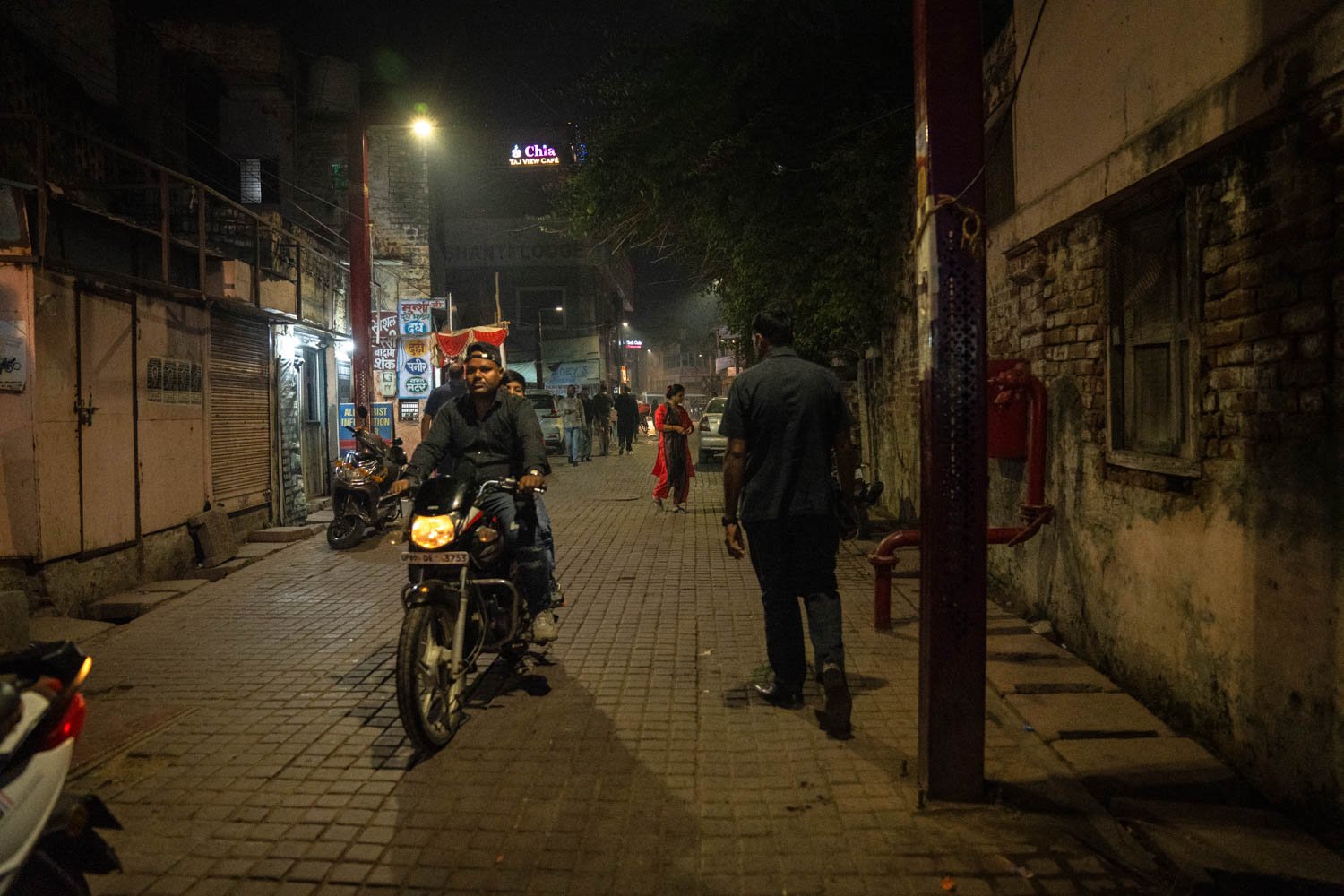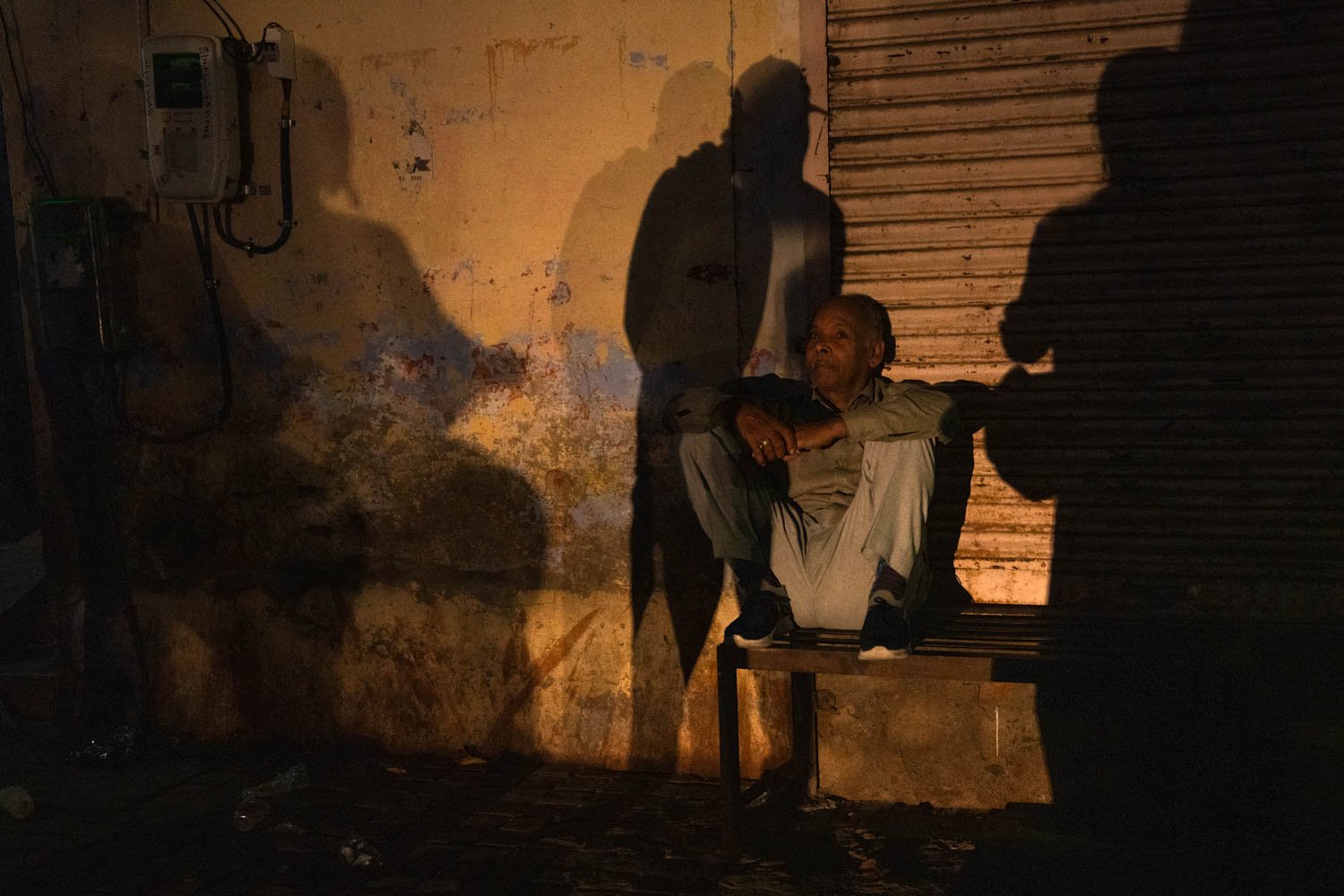On The Road: The Magic of Agra by Anne Launcelott
A first-time trip to India would be incomplete without a visit to the Taj Mahal, both a masterful example of Mughal architecture from the mid-17th century, and an impressive reminder of the power of love. The Mughal emperor Shah Jahan (reigned 1628-1658) had this world famous ivory-white mausoleum built to honor his favorite wife, Mumtaz Mahal. Most all visitors to the UNESCO World heritage site stay overnight in Agra, where the Taj Mahal is located, about 230-kilometers (or 140-miles) southeast of New Delhi. And then it’s back on the tour bus and off to Jaipur, or some other fascinating location in India. In my case, I was traveling with three other female photographers and we were traveling by car.
We went to visit the Taj Mahal early in the morning to avoid the crowds. However, the air quality was poor and it seemed as if the building was covered in fog. Despite this, the Taj Mahal was still an impressive sight, with its ornate design and rich history. The contrast between the beauty of the Taj Mahal and the busy city that surrounded it was stark. However, Agra, the city with a population of almost 2.5 million, has much more to offer than just the Taj Mahal.
For the better part of the Mughal Dynasty (1526–1858), considered the richest and longest ruling in India, Agra was the capital. The Mughals were Muslims of Central Asian origin, Persian was their court language – and at its peak, the rulers controlled large portions of India.
As George Harrison (1943-2001) reminded us, all things must pass.
The Mughals eventually gave way to the British by 1858, and Agra diminished significantly in importance.
Today, Agra is a poor city and a visit to the market is a sobering experience for someone from a Western country where everything is clean and sterile – immaculate by comparison.
Here my senses were assaulted routinely by a terrible stench; for the first time I wished that my post-COVID lack of smell was still an issue.
Crowds upon crowds, filthy streets with cows wandering without purpose, unrelenting noise, and non-stop traffic added to the sensory overload. Yet this is the reality of Agra, and it is fascinating. Recently, I was in India during Diwali, a major Hindu religious festival that lasts for five-days during the lunar months of Ashvina and Karttika (October–November). Diwali celebrates the spiritual “victory of light over darkness, good over evil, and knowledge over ignorance.” For this annual festival, the streets of Agra were lit up and children were having so much fun celebrating by lighting firecrackers and sparklers. Businesses flourished and work never seemed to stop … even late into the evening. Exploring the backstreets away from the crowds and din of the market, I found solitude and a sense of calm away from the busy, noisy and vibrant market.
In India, anything is possible. There is no place quite like it in this world.
